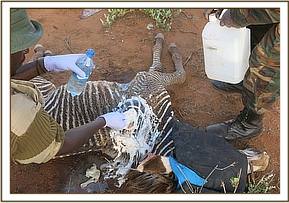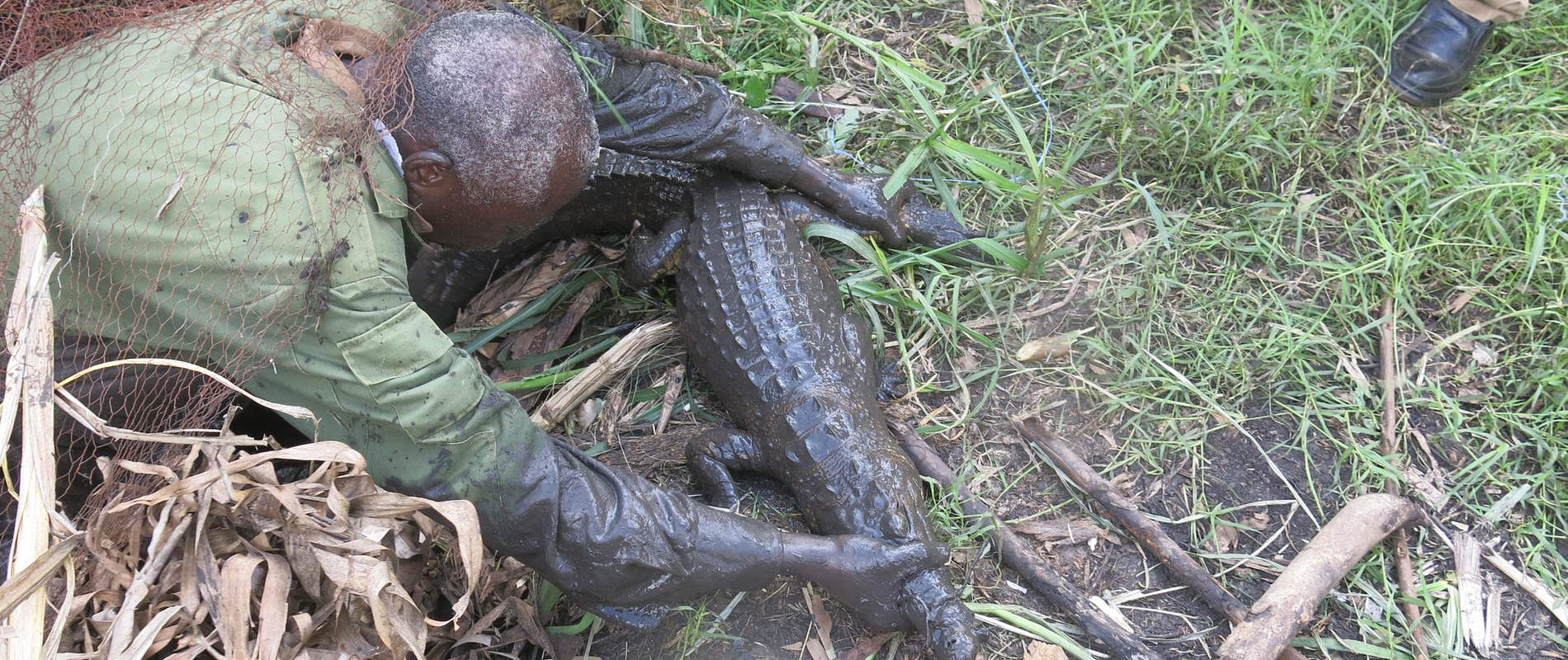EASTERN CONSERVATION AREA VETERINARY UNIT MONTHLY REPORT DECEMBER 2016 Report by: Bernard Rono Summary This report describes activities of the Meru Veterinary unit in Northern Kenya in December 2016
EASTERN CONSERVATION AREA VETERINARY UNIT MONTHLY REPORT DECEMBER 2016
Report by: Bernard Rono
Summary
This report describes activities of the Meru Veterinary unit in Northern Kenya in December 2016.
The unit attended to many wild animal species including injured elephants in Mpala Conservancy and Samburu national reserve, a white rhino calf in Lewa, sick bongos at Mount Kenya Game Ranch, snare removal on a buffalo and relocation of a crocodile at Meru national park and a zebra in Westgate Conservancy.
The Meru veterinary unit is supported by the David Sheldrick Trust to provide veterinary care in northern Kenya.
CASE #1: BLACK RHINO NECROPSY
Date: 5th Dec 2016
Species: Black rhino
Sex: Female
Age: Adult (41 years)
Location: Lewa wildlife conservancy
History
An old female black rhino in Lewa wildlife conservancy (LWC) showed progressive loss of body condition, emaciation and difficulty standing up. Attempts to provide supplementary feeds were not successful. On the 04/12/16 the female was found recumbent and unable to stand on its feet despite prodding by rangers. On 05/12/16 the rhino was found dead and a post mortem was carried out.
Necropsy showed gelatinization of subcutaneous fat and skeletal muscle due to starvation. Molar teeth were worn out. No other significant findings were seen. The cause of death was suspected to be complications from old age.
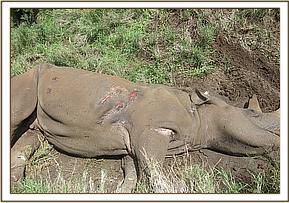

CASE #2: SNARED BUFFALO
Date: 8th Dec 2016
Species: Buffalo
Sex: Male
Age: Adult
Location: Meru national park
History
KWS rangers on patrol near Murera airstrip reported a buffalo which was limping and had a wire snare on its right hind leg which needed to be removed.
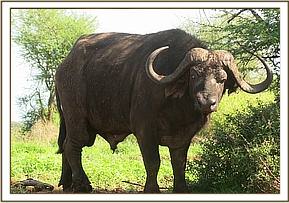

Immobilization, examination and treatment
Immobilization was achieved by using a combination of Captivon and Azaperone. The buffalo went down in four minutes in left lateral recumbence. A plain wire snare had cut through the coronary band of the left hoof causing a wound. The distal part of the leg was also swollen.
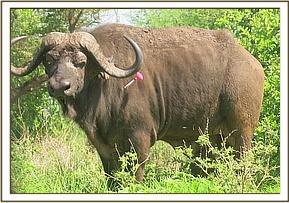

The snare was removed by cutting with a wire cutter and pulling it out. Topical antibiotics and green clay were applied to the wound. The buffalo was also give long lasting antibiotics.
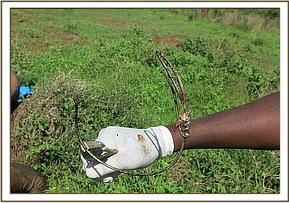

Prognosis
This injury has a good prognosis for recovery.


CASE #3: TREATMENT OF AN ELEPHANT WITH GUNSHOT INJURY
Date: 11th December 2016
Species: Elephant
Sex: Male
Age: Adult
Location: Mpala conservancy
HISTORY
On 10/12/16 rangers from Mpala conservancy reported an elephant which showed severe lameness and swelling of its left forelimb. A veterinary assessment was carried out on 11/12/16 to determine the cause and extent of injury.
Immobilization, treatment and examination
Immobilization was achieved using Captivon® delivered in a 3cc Dan-Inject dart. The elephant was trailed on foot and the dart placed into the gluteal muscles. It went down in six minutes and rolled onto right lateral recumbence for examination and treatment.
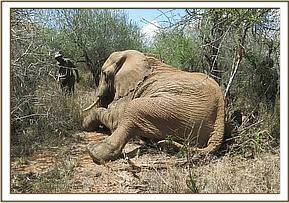

Examination showed a puncture wound into the medial aspect of the left carpal joint. On probing the wound with forceps, necrotic tissue, pus and clear watery discharge were found. The wound was more than 15 centimeters deep penetrating into the carpal joint with suspected bone fracture. These findings are consistent with gunshot injury.
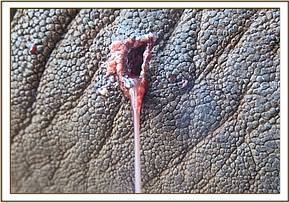

Treatment consisted of wound debridement using Hydrogen peroxide to remove necrotic tissue and application of Povidone iodine to manage deep bacterial infection. Antibiotic and anti-inflammatory drugs were administered by intramuscular route to prevent spread of infection.
Reversal
Reversal of the anesthetic was achieved by intravenous administration of Naltrexone hydrochloride.

Prognosis
Prognosis for recovery is guarded due to suspected bone involvement. Bone fractures in elephants are difficult to manage due to massive weight on the bone and unresponsive bacterial infection.
CASE #4: RELOCATION OF A CROCODILE
Date: 12th Dec 2016
Species: Crocodile
Capture site: Fish pond Kanjo
Release site: Meru national park
A fish farmer reported that a crocodile had strayed into his farm from a nearby river and was causing losses on its fish.


An assessment showed a young crocodile about one meter long.
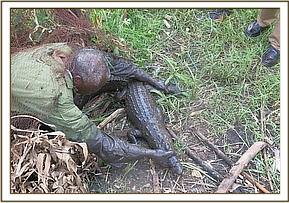
The crocodile was restrained physically and relocated to Mulika river in Meru national park.
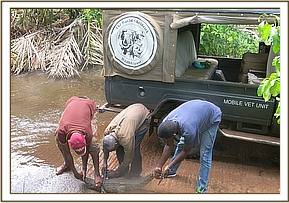

CASE #5: INJURED WHITE RHINO IN LEWA CONSERVANCY
Date: 14th Dec 2016
Species: White rhino
Name: Tumbili’s calf 9 (ID 2604)
Sex: Female
Age: 2 years
Location: Lewa wildlife conservancy
History
On 13/12/16 a white rhino calf was reported to have been attacked by an adult male and severely injured on its left forelimb. Observation on 14/12/16 showed leg carrying lameness and slight swelling of the affected leg.
Immobilization and examination
A combination of Captivon® 1.5mg and Azaperone Hcl 30mg was used for anesthesia. Darting was done from a vehicle with the dart placed into the gluteal muscles and the rhino going down in eight minutes. A blindfold was applied and the rhino rolled to right lateral recumbence for examination and examination.
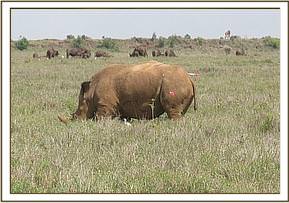

Lacerations were observed to the ventral aspect of abdomen. On manipulation of the affected left forelimb, crepitus was felt at the elbow joint. Injury was tentatively diagnosed as elbow joint dislocation and/or fracture.
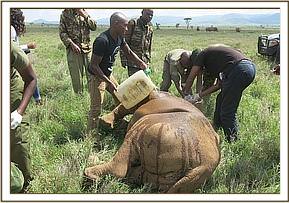

Case management and prognosis
Anti-inflammatory and antibiotic drugs were administered by intramuscular route. Naltrexone hydrochloride was administered intravenously to reverse effect of the anesthesia.
Because of the location of injury, it was difficult to reduce and fix the affected bones. Therefore, confinement and care in a boma was recommended. In the following two days observations showed its health was deteriorating, it was moving around and straining the affected leg.
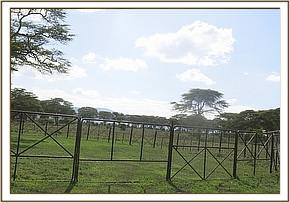

This rhino was darted and transported to a boma on 16/12/16. Attempts to radiograph the affected part to determine the extent of injury were not successful.
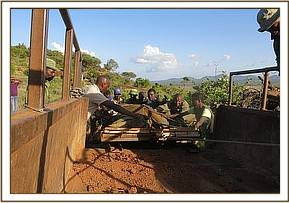
A guarded prognosis was made. In the boma the rhinos health continued to deteriorate. Observations on 20/12/16 showed it was depressed, had lost body condition, prolonged periods of recumbency and off feed for 5 days. Euthanasia was recommended.
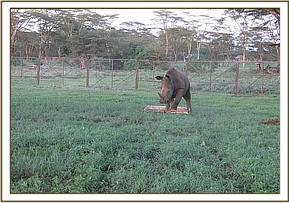

Post mortem findings
Condylar fracture of the left humerus with displacement of the cubital joint.
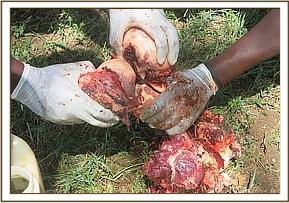
CASE #6: WOUND IN ELEPHANT
Date: 18/12//2016
Species: Elephant
Sex: Male
Age: Adult
Location: Samburu national reserve
History
Researchers from Save the Elephants (STE) found this injured elephant bull during routine patrol in Samburu national reserve (SNR). Its presence in SNR had not been recorded in the last two years and was assumed to have migrated there recently. The bull had pus discharge from the medial aspect of the left forelimb distal to the carpal joint and favoured this leg. The cause of this wound could not be established immediately. It was immobilized for examination and treatment on 18/12/16.
Immobilization and case management
Immobilization was achieved using Captivon® administered by a 3cc Dan-Inject dart into the gluteal muscles from a vehicle. After darting the elephant moved a short distance and fell into a shallow mud pool after eight minutes in a ‘dog sitting’ sternal posture.
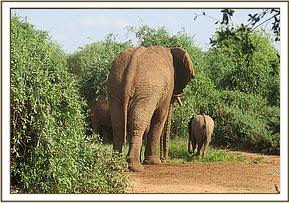

In this position its breathing was severely compromised. As a result of weight on its hind legs the hip joint was at a risk of fracture due to splayed legs. The anesthesia had to be reversed immediately to avoid further deterioration on the health of this elephant. Reversal was achieved by intravenous administration of Naltrexone hydrochloride.
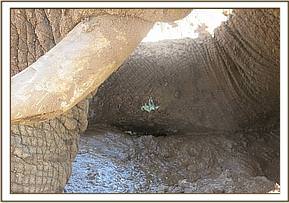

No treatment was administered, however, the STE will monitor and update on its progress in due course.
CASE #7: BONGO HEALTH ASSESSMENT
Mount Kenya game ranch (MKGR) is a captive bongo breeding facility which aims to rehabilitate bongo and reintroduce them to their natural habitat.
Two bongos were reported to sick in MKGR on 18/12/16. The sick animals showed submandibular edema, severe diarrhea, weakness and a rapid loss in body condition. Animals did not respond to anthelmintic and antibiotic treatment.


On 20/12/16 we collected fecal and blood samples for parasitological and hematological analysis from two sick individuals and two apparently healthy individuals. Laboratory results will guide further treatment.
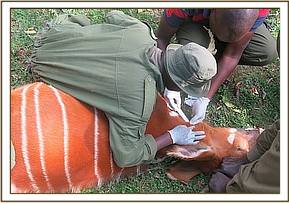

CASE #8: INJURED GREVYS ZEBRA FOAL
Date: 21/12//2016
Species: Grevys zebra
Sex: Male
Age: 3 months
Location: West Gate conservancy
History
Security officer in West Gate Conservancy reported a Grevys zebra with a wound to the left shoulder and severe lameness for the last five days. A veterinary assessment and treatment was carried out on 21/12/16.
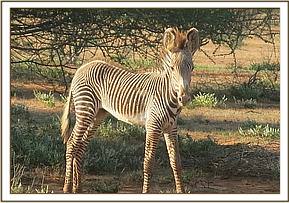

Immobilization, examination and treatment
Chemical restraint was achieved using Captivon® 1.5 mg and Azaperone 20mg delivered in a 1.5 cc Dan-Inject dart. The dart was placed into the gluteal muscles and the zebra went down in 4 minutes.Examination showed a puncture wound dorsally into the left scapula with copious amount pus discharge.
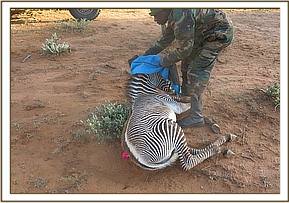

The wounds were cleaned and debrided using Hydrogen peroxide and topical application of Iodine. Antibiotics and anti-inflammatory drugs were injected by intramuscular route. This foal was found in company of its dam and was in good body condition. It is expected to make a complete recovery in the coming days.
